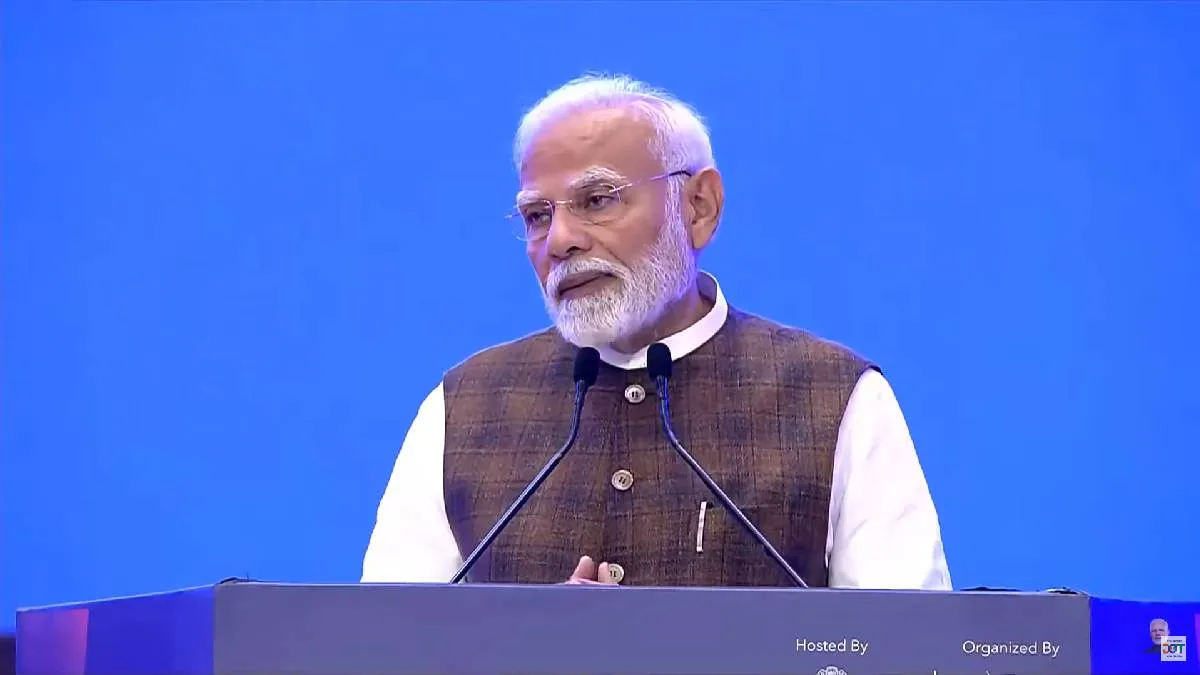How India's telecom sector differs from rest of the world? PM Modi outlines 10 key points at IMC 2024
PM Modi inaugurated the World Telecommunication Standardization Assembly and India Mobile Congress 2024 at Bharat Mandapam today. During his speech at the inauguration ceremony, PM Modi highlighted 10 achievements of the Indian telecom sector that set it apart from other countries in the world.

The India Mobile Congress, Asia's largest tech event, has officially kicked off with the theme "Future is Now." The four-day event was inaugurated by Prime Minister Modi and was attended by Union Communications Minister Jyotiraditya Scindia, telecom company leaders, and members of the International Telecommunication Union.
During the event, Prime Minister Modi emphasised that India's telecom sector is unique compared to the rest of the world. He highlighted that while for the world, telecom is primarily a medium of communication, in India, it also serves as a means of promoting equity. He noted that in the new India, the telecom sector is instrumental in bridging the gap between rural and urban areas as well as between the rich and the poor.
PM listed 10 achievements of the Indian telecom sector
- India is emerging as a leader in telecom and technology. With 1.2 billion mobile and 950 million internet users, the country is at the forefront of digital connectivity.
- India accounts for 40 percent of the world's real-time digital transactions and has leveraged digital connectivity for efficient last-mile delivery.
- The focus on improving service quality in the Indian telecom sector has made its mobile and telecom journey a subject of global interest. Unlike in many other countries, mobile and telecom in India are not just about convenience; they also work to bridge the gap between urban and rural areas as well as between the rich and the poor.
- The Digital India initiative has focused on four key pillars: affordable devices, digital connectivity, data access for all users, and a digital-first approach.
- The Make in India program has significantly increased the number of mobile manufacturing units, contributing to the reduction in mobile phone prices.
- Efforts have been made to improve connectivity in remote areas through the rapid installation of mobile towers and public Wi-Fi hotspots in railway stations and other public places.
- India has also laid optical fibre cables under the sea to provide connectivity in the Andaman Islands. The country has achieved a remarkable feat by laying optical fibre cables equivalent to 8 times the distance between the Earth and the moon in just 10 years.
- India has demonstrated rapid progress in the rollout of 5G and is already preparing for 6G.
- With the cost of internet data at around 12 cents per GB, India offers affordable internet access, with users consuming an average of 30GB of data.
- Furthermore, technology is being harnessed for social welfare through initiatives like Drone Didi for women and Mahila e-Haat. These initiatives exemplify India's digital revolution and its commitment to leveraging technology for the benefit of its people.
ALSO READ: Jio's Akash Ambani offered two suggestions to PM Modi during IMC inauguration ceremony